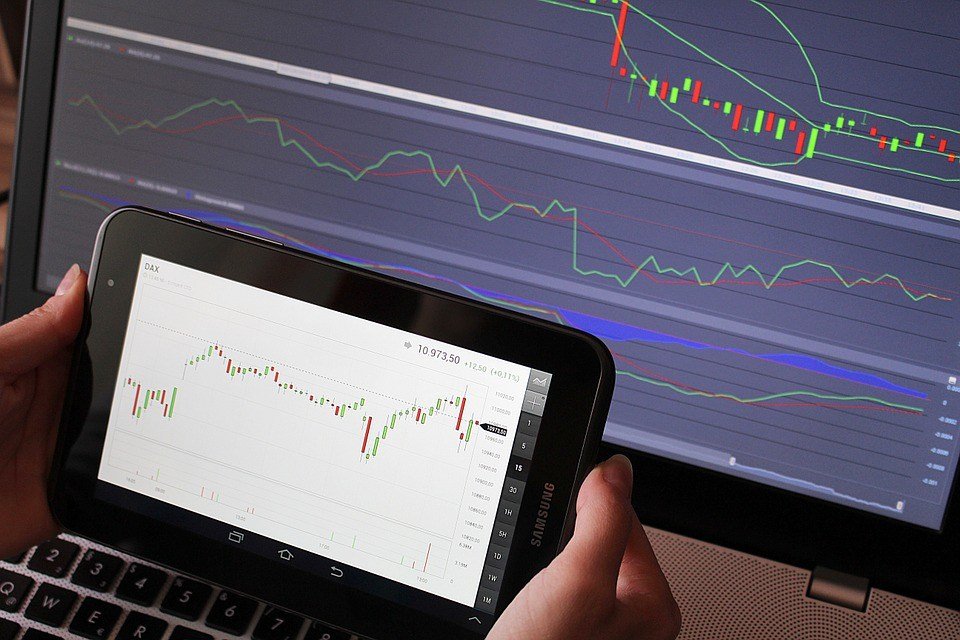Markets
The 10 most useful methods for successful Forex trading
Forex is all about trading with proper risk and reward calculation. Successful trading is all about taking calculated moves so that the losses do not affect us and at the same time profits are maximized.

Every new venture you plan to try out your hands; comes with the hope of success and fear of failure. While the hope for success is stronger in this case; the plan to manage the losses should not be left out. Forex Trading is a business venture of a similar kind; although it can be well paying but it has several risks as well.
Trading success is not always consistent; you may incur losses as well. Although a thorough research, sound planning and carefulness towards market trends may be rewarding in this field, but there is not a single formula to guarantee that it will be a profitable strike every time. The strategies should be devised to gain profits over a longer period of time and this involves planning of finance management as well.
Forex business involves risk and with it comes the need of money management. Money management is all about increasing the profits and reducing the risks. Sound money management empowers you to withstand the losses which may occur at any point of time without giving a break to your trading business.
Money management may encircle a lot of fundamental, mathematical and technical analysis but it is not that complicated. A trader must chalk out a proper working plan which not only limits to fixing the time frame or setting the trial period and success goals, but also devising money management strategies.
Here are 10 Forex Money Management Tips that you can use to sail through the loss period, manage the risks and continue with trading to get good outcomes in long term.
1. Estimate your risk tolerance
This is one fundamental step towards money management. Examining your financial goals will help you to adequately allocate capital for trading and describe risk tolerance. Based on your risk capital you can set the upper limit of your position size. Before trading, you should understand the size of your deposit and whether you can manage to lose the amount in case you incur losses.
e.g. Estimating your risk capital, you may decide to risk up to 1% of your total equity in any one trade
However, it’s ideal not to risk more than 2-3% per trade. Besides, don’t be over excited estimating the potential profits; instead be careful about the potential risks.
2. Grow your portfolio gradually based on profits
This is a very important tip for beginners. Trading extensively in a way to earn greater profits may lead you to incur greater losses instead as there is always a risk involved. Start with small amounts and leverage and grow your portfolio as you earn profits. This will enable you to incur calculated risks.Besides good trading selections can also help you grow your portfolio and evade risks to an extent.
3. Set realistic goals
It is very important to analyze your financial goals and outcomes before you trade. Analyzing financial goals also involves setting realistic timeframes. A good trader will never be aggressive in his trading as he knows that doing this way will only expose him to a greater risk. Instead, he would plan to grow his profits gradually and logically use the compounding method. The main goal of money management is not to lose the capital and be in the trading stream for long-term and subsequently earn profits.
Always calculate the risk to reward ratio before entering a trade. If the chances to be rewarded are lower than the risks, do not trade. The risk to reward ratio should be at least 1:2 or higher preferably i.e. the chances of winning should be double or higher than the chances of losing in a trade. Adopting this rule is not only a good management strategy but is vital for success in the long run.
4. Learn to manage losses
You may be a good trader, but you can witness losses at any point in time. You must know how to handle the losses. Be patient and calm, analyze where you have gone wrong and re-plan your strategy. Understand your goals, risk capital and position size and formulate risk management strategies.
5. Keep track of your trading activity
A successful trader will always keep a record of his trading activity daily. This will help you not only to know the past trends but also what’s happening or what is going to happen but will also help you to be ready to combat any worst case scenario.
Understanding the price movements of the currency pair you are trading will help you stay prepared for adverse trends in price movement.
6. Use stop- loss orders
Stop-loss orders help you control your risks by setting a limit to your losses. Setting stop loss order helps you to incur minimum losses in case of adverse price movements in the forex market. The protective stops can set a limit to your losses to the trading balance.
e.g. If you have a trading capital of say $20,000 with a stop loss value of 30 pips for a trade, all you will lose in any adverse condition at your stop loss is $60.
This is very useful risk control method for traders who cannot constantly monitor their trade. There are four kinds of stops which a trader can use based on his trading experience and trait. They are – an equity stop, a chart stop (technical analysis), a volatility stop and a margin stop.
7. Exercise leverage thoughtfully
Leverage is a powerful tool that gives you the opportunity to magnify your profits. Leveraging your account allows you to trade for bigger gains. Leverage tools aids you to gain more profits without increasing your equity.A leverage of 1:200 on a $600 account will allow you to trade for $1,200,00. Thus you increase your chance of earning profit. But it also increases the risk level.
Therefore, the leverage tool should be understood and used wisely.Understanding the way to use it wisely will also help you estimate the potential losses, making your trading process more guarded.
8. Estimate the exit points
Determining the exits points in a trade is very important before entering into it. Understanding the trade timings will always give you an edge to calculate the profit and loss of a position. Understanding the exit points will help you in moving out without losing out money. Ability to calculate the trade timings will empower you to calculate risks and rewards enabling you to decide when to exit before the trend you bought is about to end.
9. Recovering lost capital
In case you have incurred losses in your trading journey, you will always try to recover the lost amount in your next trade. But the process of recovering the lost capital may lead to adding up to other potential expenses like spreads and commission which should also be considered in the process so that it does not affect your bills and expenses.
e.g. if your trading amount is $5000 and the percentage of loss is 25%, you need to make 35% of the new balance ($1250) to recover the losses. This is only about covering losses.
Therefore, the ideal way to handle such situations is to reduce your trading amount in case you’re in loss or wait for the time when a profitable trade resurfaces.
Hold yourself from being emotional or stressed as it may topple all your profit earning and long-term strategies.
10. Plan a long-term strategy
A long-term strategy will always give you an edge in minimizing the risk of failure. A trading system, when continued for a long term, will help you estimate and determine its success and failure. Going for a short term strategy may increase your risk to lose more often. Successful trading nurtures gradually. Be patient and go with the market trends. Continuous focus and effort are surely going to bring rewards in this field. It’s very rare to find immediate results.
How Forex money management tips help
As a trader, you know you cannot control the market trends but you can always control your money. In order to survive in the market on a long-term basis and reap maximum benefits in Forex trading business, it is very necessary to ensure money management strategies are channelized well to reduce the risks and maximize profits. Every trader has his own risk taking capacity and own money management strategies. But if you are a new trader or trying to gain a substantial foothold in the market these informative money management tips will surely be a great aide to go for a planned and success-oriented approach towards Forex trading.
Forex is all about trading with proper risk and reward calculation. Successful trading is all about taking calculated moves so that the losses do not affect us and at the same time profits are maximized. To ensure that you do not fail to keep your profits, to avoid losing your trading balance and to make good profits, this guidebook of Forex money management tips is a definite thing to be followed by all traders.
—
DISCLAIMER: This article expresses my own ideas and opinions. Any information I have shared are from sources that I believe to be reliable and accurate. I did not receive any financial compensation in writing this post, nor do I own any shares in any company I’ve mentioned. I encourage any reader to do their own diligent research first before making any investment decisions.

-

 Crowdfunding2 weeks ago
Crowdfunding2 weeks agoFlower Burger Launches Crowdfunding to Fuel Growth in Booming Plant-Based Market
-

 Business2 days ago
Business2 days agoTopRanked.io Weekly Affiliate Digest: What’s Hot in Affiliate Marketing [1xBet + FIFA World Cup]
-

 Business1 week ago
Business1 week agoThe TopRanked.io Weekly Digest: What’s Hot in Affiliate Marketing [K4G Affiliates Review]
-

 Crypto4 days ago
Crypto4 days agoTether Targets $500 Billion Valuation in Landmark Funding Push

























You must be logged in to post a comment Login